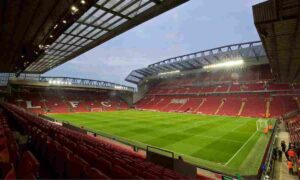After several acrimonious meetings and intensive deliberations the All India Football Federation AIFF came into existence in the summer of 1937. After Independence, the AIFF sought affiliation to the world body FIFA. So eleven years after being found, the AIFF joined FIFA in 1948. The AIFF has played an active role in promoting football, not only in the country, but also in Asia. India was one of the founder members of the Asian Football Confederation (AFC) in 1954. The AFC was form when several Asian delegates met during the 2nd Asian Games in Manila in 1954.
Origin of AIFF
On 23rd June 1937, at the Army Headquarters, Simla, the All India Football Federation was form at a meeting of the representatives of football associations of six regions where the game was very popular in those days. The six regions which attended that historic meeting were Indian Football Association (IFA) . The ruling body of the game in Bengal, Army Sports Control Board, United Provinces, Bihar, North West India Football Association and Delhi.
Before the birth of AIFF, there was no properly constitute national organisation. However, the Indian Football Association, the oldest association of its kind in the country, was recognise by football lovers throughout the country, as the ruling body of football in the country. So the AIFF had in the Indian Football Association (Bengal), a forerunner that dates back to 1893. In its formative years, Englishmen dominated the executive committee of the IFA. In fact, the only Indian representative was Kalicharan Mitra from the Sobhabazar Club.
Methodical organisation and sustained efforts to promote the game in Bengal made the IFA the premier football body in the country in the early decades of the 20th century. For all practical purposes, it was the national controlling body largely. Because the IFA was affiliate to the Football Association of England. Hence all foreign tours were conduct by the IFA. Also all the foreign teams negotiated with the IFA. For visits to India and matches in Calcutta and other cities in India.
How it all Began
There were not very many football associations in the provinces of the country. The IFA, however, felt they should endeavour to form a national body. Accordingly, they invited representatives of other provincial football associations then in existence, at a conference in Darbhanga in 1935. The conference was presided over by the (late) Maharaja of Santosh, then president of the IFA and representatives of IFA, Assam, Bihar, UP, Delhi, Mysore and Bombay were present. The conference, however, proved abortive and a sharp difference of opinion cropped up with the result, the IFA delegates (late) SN Banerjee and (late) Pankaj Gupta left the conference in protest along with the Maharaja of Santosh.
The remaining delegates, however, formed a body and styled it as ‘All India Football Association’ with the Raja Bahadur of Darnhanga and Rai Bahadur J.P. Sinha honorary secretary. The IFA and the Army Sports Control Board did not join this body and there had been a deadlock. The IFA, however, made another effort to dissolve the deadlock and sent Mr Pankaj Gupta to Delhi to confer with Brigadier VHB Majendine, the then president of the Army Sports Control Board. This meeting took place early March 1937 and Messrs Majendine and Gupta drew up a formula which ultimately led to the formation of the All India Football Federation.
It was agreed at the Delhi talks between Messrs Gupta and Majendine that a conference should be called by the Army Sports Control Board towards the end of March at Delhi in which three representatives of the IFA and three representatives of the All India Football Association would be present.
From IFA to AIFF
The conference accordingly took place on 27 March 1937 at New Delhi. It was attend on behalf of the IFA by late Mr SN Banerjee, Bar-at-Law (who subsequently became the president of IFA in 1940), Mr Pankaj Gupta, who at that juncture was the joint honorary secretary of the IFA and Mr HN Nicholls (vice president, IFA who subsequently became the president of IFA in 1939). Others to attend the conference were Mr Badrul Islam (Delhi), HE Brandon (Bombay) and Rai Bahadur JP Sinha (honorary secretary, All India Football Association -AIFF) represented AIFA. Brigadier VHB Majendine presided at this meeting as chairman. At this conference, it was agreed to liquidate the All India Football Association and instead to form an All India Football Federation (AIFF) with one representative from each affiliated association and two each from IFA and ASCB.
Messrs P Gupta and Brandon were entrusted to draft the rules of the new federation to be placed for consideration at the inaugural meeting to be held at Simla on the 23rd June 1937. At this inaugural meeting the following office-bearers were elect: President: Brigadier VHB Mejendine, DSO (ASCB). Hon Secretary: Major A.C. Wilson (ASCB), Hon Treasurer: Pankaj Gupta (IFA).
Presidents:
Brigadier VHB Majendine (ASCB), Brigadier Dorman Smith (ASCB), D Moir (Bombay), Pankaj Gupta (IFA), Moinul Huq (Bihar), M Dutta Ray (IFA), Nurul Amin (Assam), K Ziauddin (WIFA), Priyaranjan Dasmunshi (Women’s Football Association and Bihar) and Praful Patel (WIFA)
Secretaries:
Major AC Wilson (ASCB), Major JB Donaldson (ASCB), EJ Turner (Bombay), M Dutta Ray (IFA), Major Lachman Singh (ASCB), K Ziauddin (WIFA), Vijayrangam (Mysore), Ashok Ghosh (IFA), PP Lakshmanan (Kerala), KN Mour (Assam), Alberto Colaco (Goa) and Kushal Das.
*ASCB means Army Sports Control Board. The Services Sports Control Board (SSCB) came into existence only after Independence in 1948.
AIFF through the passing years:
Read More :- Justine Ojoka Emmanuel is now a Blaster
The AIFF was launch in 1937, but the concept of the national team did not gather momentum till after Independence. Initially, the AIFF tried to popularise the game in different cities of India. However, Indian football was quite insular. And had little contact with the outside world except for tours to Australia, Malaysia, Burma and South Africa. Matches were often of only fifty or sixty minutes duration. And aspects like stamina, fitness and endurance were not taken seriously.
With seven barefoot players, India entered the 1948 London Olympics under the captaincy of Talimeran Aao of Mohun Bagan but lost to France 1-2. Winger S. Raman scored the lone goal for India. Balai Das Chatterjee was the first national coach. He was in charge of the Indian team for the 1948 London Olympics.
AIFF’s Scenario
The most successful national coach was the late S.A. Rahim (Hyderabad) with a success rate of 61 per cent. During his tenure, India won gold medals in the Asian Games in 1951 and 1962. And the Quadrangular tournament from 1952—54. The most successful foreign coach was Bob Houghton (England) with a success rate of 55 per cent. He was coach from June 2006 till March 2011. And India won the Nehru Cup in 2007 and 2009 and the AFC Challenge Cup in 2008. At present Rob Banns (Netherlands) is the Technical Director and Wim Kovermans (Netherlands) is the national coach since mid-June 2012.
In 1949, India had successful tours of both Ceylon (now Sri Lanka) and Afghanistan. In 1950, India automatically qualify for the World Cup to be in Brazil that year. The preliminaries, they were club with Burma and Philippines, both of whom withdrew. However, India could not compete in the 1950 World Cup final round. As the AIFF lacked sufficient funds to bear the expenses of the passage. There were also apprehensions that the mainly barefoot Indian team would get route in the World Cup.
In the 1952 Helsinki Olympics, India lost 1-10 to Yugoslavia. This was a wake-up call for the AIFF, which finally made it compulsory to wear boots for all major tournaments. Ninety-minute play and use of international size grounds were also introduce a decade later.
Follow our Twitter Handle for more updates.
For more football updates, make sure to follow us on:






















